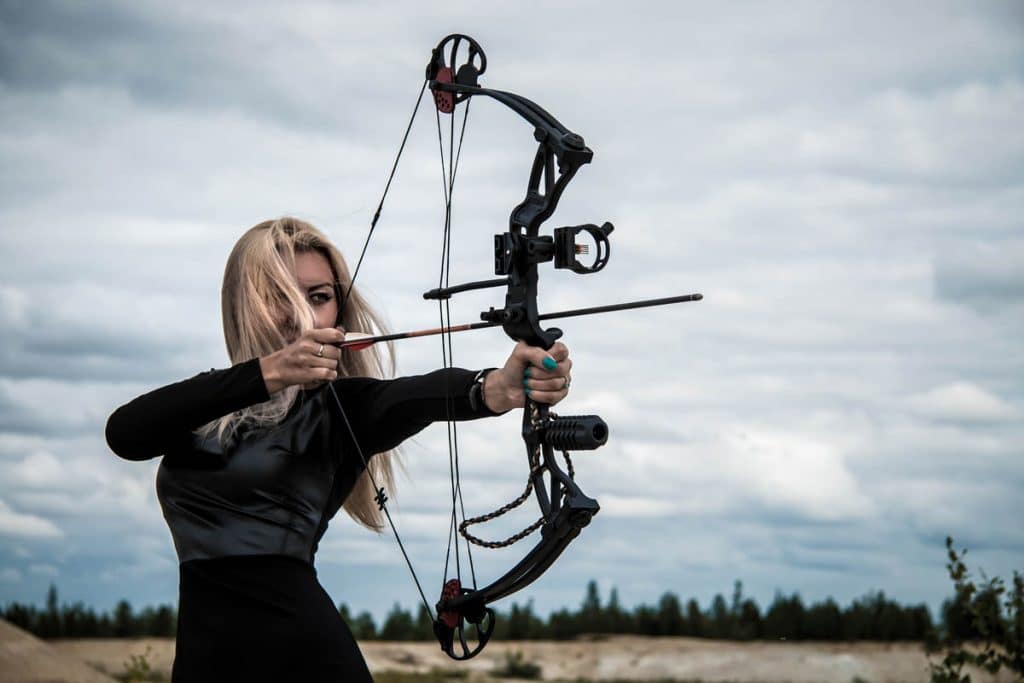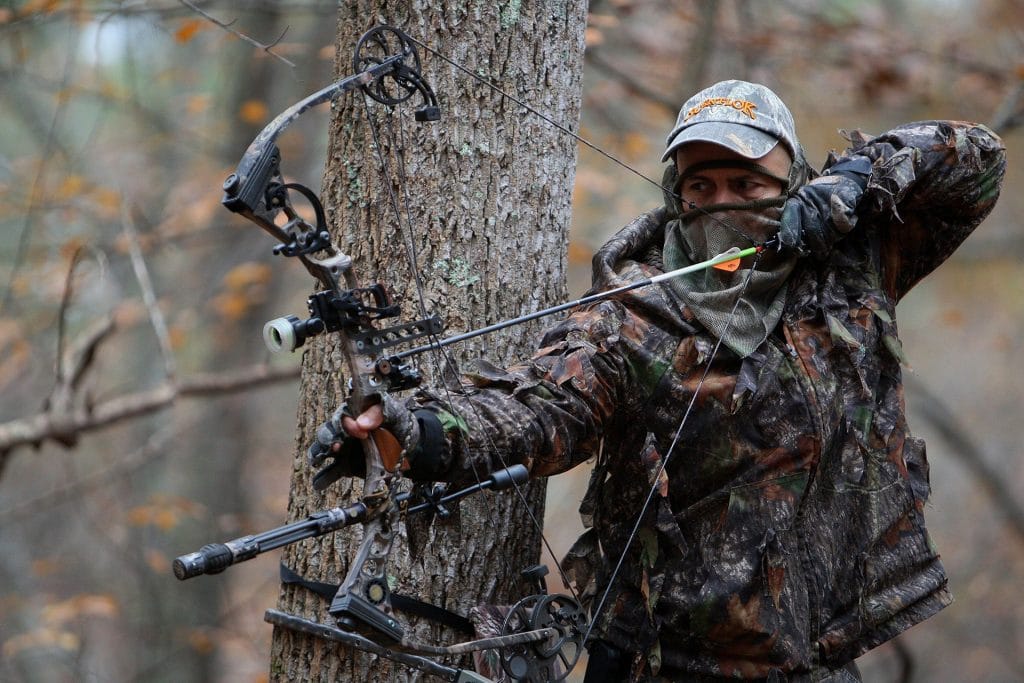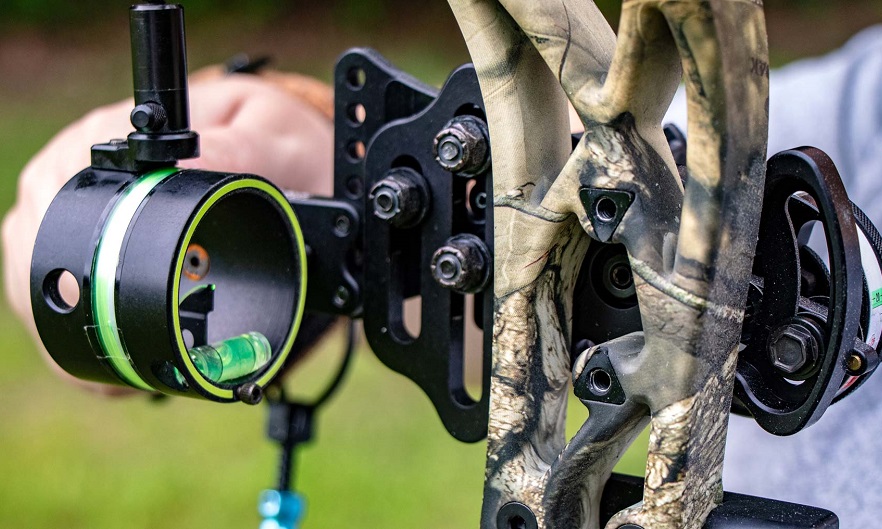

A recurve bow is the most popular traditional bow to use and most often recommended for beginner archers. Its reflex design allows shooters to shoot arrows faster and with greater accuracy. But behind the success of the bow is the correct way to string it. If you own one, you need to know how to string a recurve bow the right way.
One of the most basic, yet most important fundamental skills you can learn to extend your bow’s life span is stringing your bow correctly. Stringing and unstringing your bow will not only keep your bow and string safe from damage when not in use, but it also makes the bow suitable for easy storage.
There aren’t many tools or materials involved with stringing a bow. Besides the bow parts themselves, you can also use a neat little device called a bow-stringer, but using it is up to you. You should, however, be dressed up appropriately for the job, especially if you plan on stringing by hand. Many archers often put on heavier footwear in order to better keep the bow in place when under high tension. The arm guard for soothing is also useful and decent protection in the odd case that the string snaps. Well-gripped gloves are also recommended so nothing slips in the process.
You’ll also need basic knowledge of the anatomy of the recurve bow in order to better follow stringing instructions.
It’s best to seek out recommendations for the best bow-stringer from somewhere like a nearby archery shop, where you can receive some professional opinion and learn how to use it firsthand.
Using a stringer is the easiest and safest method for stringing your recurve bow, and the one method that bow manufacturers recommend above all, especially for beginners. They’re affordable and durable nylon tools with weight limitations (be sure to check yours) and they make the stringing process far less of a hassle.
Stringers are made up of a nylon cord and two simple types of designs for the grippers: saddle or double pocket. Either way, the tip of your bow’s bottom limb will be covered with a larger rubber or leather pocket. The saddle or double pocket will fit their own respective ways over the upper bow limb.
The stringing process can be learned from anywhere, either with help from someone you know, advice from a local archery shop, or by yourself with tutorials online. If you’re the type to prefer learning these things on your own, read ahead for instructions on how to string your recurve bow with a stringer:
Step 1: Strings come with two loops: one larger and one smaller. Take the larger string loop and slide it over the upper limb, then slide the smaller loop over the lower limb. Make sure the bottom loop is fastened on the bottom limb groove.
Step 2: Slide the large stringer pocket over the lower limb tip and string loop.
Step 3: Hold the bow horizontally, string side facing the floor. Place the small pocket (or saddle) over the upper limb behind the upper string loop.
Step 4: Hold the bow by the grip. If you’re using the saddle style stringer, use your vacant hand to position the saddle until it fits snugly and can’t be moved further. Let the stringer cord touch the ground and step on it with the balls of both feet, preferably instead of one.
Step 5: Make sure there is no slack in the cord as you pull up the bow and slide the upper string loop. The bow should be bending downwards, making it easier to pull the string loop to lock with the string nock.
Step 6: Carefully check the string to see how well it has fastened and test the string’s tightness with the bow in a vertical position as if you were shooting.
Step 7: If all is good, remove the stringer without misplacing the lower string loop, which should remain fastened.
To unstring the recurve bow, follow these instructions in reverse.
While it is recommended to most to use a stringer, more experienced archers might prefer to work the bow with their hands. The method does require a bit of experience in handling a bow and could be potentially dangerous to an inexperienced archer without supervision.
There are two possible methods you can learn when looking for how to string a recurve bow by hand:
For the “step-through” method, your bow string will need to be about 4 inches shorter than the bow. This is the old-fashioned, more traditional way to string a recurve bow with a few steps:
Step 1: Hook the string’s bottom loop on the lower limb of the bow. This should be the smaller loop and your string should be the right way up.
Step 2: Hold the bow in front of you and step with one foot over it. Have the bow secured behind your thigh and in front of your shin. This will act as the points where the bow will bend.
Step 3: Bring the upper limb you should be holding behind you forward towards the end of the string. Hook the loop onto the bow’s string groove.
Step 4: Carefully check to make sure everything is secure.
Once again, if you want to unstring your bow by hand, follow the above steps in reverse.
Another way to string a recurve bow without a stringer is by using the “foot bracing” method but it’s less than ideal and potentially dangerous if you don’t have the right amount of arm strength and skill. It is simple in theory, though, and is recommended for lighter bows and even longbows.
Step 1: Place the larger string loop on the bow’s upper limb and put the lower string loop on the nock.
Step 2: Put the lower limb under the inside of the foot to hold it strongly in place.
Step 3: With one hand, bend the bow and with the other pull.
Step 4: Bring the bow string to the top and put it in place.
Step5 5: Test to see if the bow string is securely fastened.
Of course, when your bow should be replaced is completely dependent how you use it: how well it’s taken care of, how often you go out to shoot, where you go out to shoot, and how much weight your bow can take (the draw weight). If you check regularly, you should be able to identify when there are frays or broken strands on time. On average, it takes about 3 years before you really need to replace your bow string. If you use your recurve bow more than average, you will likely have to replace the string sooner than that.
If you’re using it regularly for a certain period of time, like a hunting season, it would actually help to keep your bow strung until the off-season. The truth is repetitive stringing and unstringing over such short time periods can be more damaging than leaving it strung throughout. The limbs can get bent and warped, even twisted leaving the bow useless.
Whichever method you choose to string your recurve bow with, always make sure to look for signs of any damage or wear and tear on every part of your bow and equipment. To avoid issues and potential injuries while stringing your bow, get any possible anomalies fixed before use. Remember to always unstring your bow after you’re done with using it in order to preserve its shape and draw weight. Wax regularly to avoid the dry, damaged feel.





